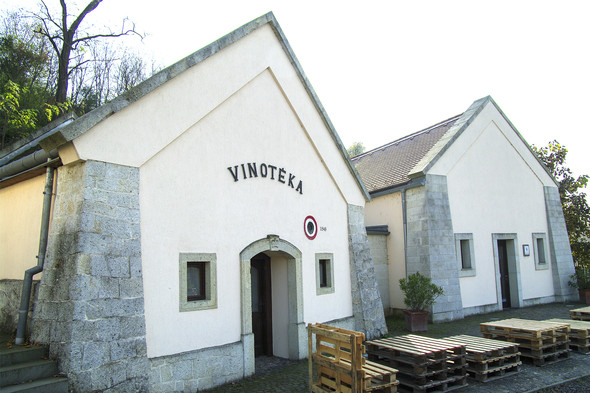The Bodrogkeresztúr winery has a written history going back more than 600 years, to the reign of the Hungarian King Zsigmond (Sigismund), to be precise 1406. Its name was first mentioned then, in an inventory which reviewed the tithe. The owners believe that we probably have to search for the origin of the winery in even earlier times. What is sure is that Dereszla has been owned by the Rákóczis, the Aspremont House and the Wolkensteins. After World War II, it was nationalised and ended up in the hands of the local cooperative where it functioned as a purchasing winery. In 1988, it was separated from the cooperative, but was operated in a cooperative form until 2000. That year, a family with Spanish Habsburg origins, the D’Aulans, became the majority owners of Dereszla and saved the winery from its gradual decline which had continued until 2000.
However, the turn off the Millennium saw the start of a recovery, which could be seen not only in the change of attitude, but also in the high quality of the annual harvest. The current form of the winery, with its new processing facility, logistical and administrative building built in 2007, tries to maintain the feeling of its traditional cellar entrance and press house; however, the technological reconstruction of Dereszla is still continuing with the help of tender funds.
About eighty percent of Dereszla wines are sold abroad; the USA, France and even Sweden are the primary export markets of this Tokaj winery, but they are present in 33 countries altogether with their wines. Most of these are Aszús, and they would also like to turn their attention to them in particular, given that the renaissance mentioned above was started by their dry wines.
The philosophy of Chateau Dereszla is to assess and get to know market needs, and to respond to them at the right time with the most suitable product. As a result of this philosophy, they are also planning to make sparkling wine. Maybe some consumers have already come across some sparkling wine from Dereszla, but from their point of view, this is just a ‘marketing test’. By their own admission, they have suffered various failures during these marketing tests. However, for instance, the Dorombor product family, well-known in Hungary, aimed at consumers aged between 20 and 40 and priced at around three Euros, has become a real success story. Dereszla’s aim with Dorombor was to convince consumers averse to wines from Tokaj with a plain, good value for money style, but now Romania, the Ukraine, even the Netherlands count among the consumers of this product family.
Dereszla, producing wines from 120 acres (35 percent of which are owned by them), is of course active within the premium segment; their vineyard-selected wines all come from the Lapis, Napos, Zsadány, Palota, Király, and Dorgó vineyards. Most of them are Furmint and Hárslevelű, but they also work with Kabar, Muscat Lunel and also Sauvignon Blanc, which can, however, only be sold in Tokaj-Hegyalja without any designation of origin.
They welcome visitors in their historical cellar, more than a kilometre in length and three storeys deep, for both cellar visits and wine-tasting. They have a capacity of 60+20 people per occasion.






